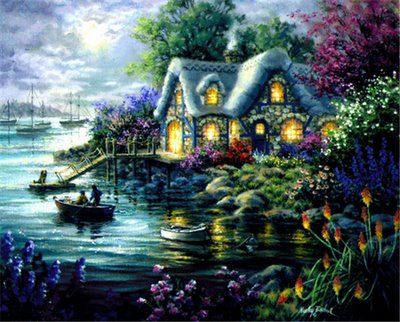 Food is an important part of the human culture of Vale. Rustic and earthy folk, the men and women of the valley have discovered a number of delicacies among the native flora and fauna. most meals include a mixture of vegetables, fruits, nuts and usually one or two meat dishes but there are several noteworthy dishes besides the common steak or mutton chop.
Food is an important part of the human culture of Vale. Rustic and earthy folk, the men and women of the valley have discovered a number of delicacies among the native flora and fauna. most meals include a mixture of vegetables, fruits, nuts and usually one or two meat dishes but there are several noteworthy dishes besides the common steak or mutton chop.One of these is the poaching of birds of all sorts. The Haelic folk of the Vale seem to have an affinity for the slow-cooking of all manner of avian life from small song birds as appetizers to larger foul. Such dishes are often served with sauces mixed from cream and berries or jelly glazes.
Boar meat is one of the most common of the wild meats served. The native species of boars range in flavor from the musky, gamey flesh of the Razortusk to the spicey, almost peppery meat of the Blunt-Tusked Cliff Boar. Boar meat is often served with a minimum of seasonings, the flavor of the meat allowed to express itself. Sides are offered along with the boar and usually take the form of complimentary nuts and vegetables, often roots and tubors.
Along the rivers, many types of fish are served. Among them are several forms of dangerous, predatory gars and pike, the sort that take challenge to catch, but the rarest and most dangerous is the Bull Eel - a seven foot long eel noted for the horn-like growths above its eyes. Bull Eel is served boiled and whole, all its organs intact and a single eel can feed an entire family.
Mushroom Pie is a favorite baked good, the forest of the valley offering several varieties of hearty, meaty fungus that bake into fragrent, juicy pastries and pies. Often, the mushrooms are mixed with other vegetables and sometimes grains and carried as provisions. One variety of mushroom called the Hearthstool is as big as a serving platter and is sometimes roasted whole or breaded and fried as a food to be enjoyed at social functions.
A special kind of honey is obtained from the Reaper Wasps of the deep forests and it's red-hued sweetness is prized both for its flavor and its reputation as a love potion. Obtaining this honey is dangerous as the solitary Reaper Wasps protect their nests and clutches of eggs with suicidal zeal.
In the South, in Bethalport and the surounding villages, many kinds of seafood are to be had. From Saber Muscles and Shallow Loach Fish, the variety there is great. Cove Octopi are often cultivated in tidal pens and harvested at about a year old when their heads measure the size of a large dog. Cape Perch and Sea Harps (a golden-colored seal) are hunted through the traditional means of harpooning as the struggle these beasts go through in being netted poisons the meat.
Much prized among the Brinefolk are the sholes of Moon Tarpin that gather in the Autumn months under the harvest moon. At this time the tarpin are lulled into a sort of languid stupor as they get their bearings for their upcoming migration to the mosre southerly waters. Huge hauls of Moon Tarpin are brought in by the Portlock fishing fleets during these months, often requiring the recruiting of extra hands to take full advantage. During this time though a special hazard also visits the coastal waters off Vale - the Abyss Shark.
Abyss Sharks are so-called for the fact that their black bodies absorb light, making them nearly impossible to spot in the nighttime waters. Many fishermen have found themselve the victim of a nearby Abyss Shark simply because the predator was unseeable in the hazey night. During the gathering of the Moon Tarpin, these sharks are at their most agressive, using the abundance of easy prey to stock up on food so that they may begin their bi-annual mating duels. Finding oneself in the midst of a pair of duelling Abyss sharks is the sort of thing that rare survivors care little to speak of.
There are more delicacies in the land of Vale, but space does not allow a full disclosure, but the variety and ingenious use of the valley's abundance never ceases to amaze visitors to this rustic land.

